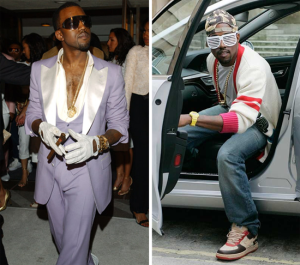 I love watching Rupaul’s Drag Race because it is so entertaining, because I admire the confidence and the bravery of these women to create their own identities, to inquire, as Season 1’s winner, Bebe, did “What makes a strong man?” Despite teaching the viewing audience invaluable lessons like “White pumps are the mark of a true hooker”, I feel it has helped the proliferation of acceptance of varied presentations of gender, but the whole idea of drag is performance. Drag is the performance of gender, of women especially or at least the form of woman that the drag queens idolize, but there is still variation in interpretation: from Season 1, Ongina was called a “lady-boy” because she did not wear wigs and Nina Flowers takes the androgynous role because she is tattooed and muscley.
I love watching Rupaul’s Drag Race because it is so entertaining, because I admire the confidence and the bravery of these women to create their own identities, to inquire, as Season 1’s winner, Bebe, did “What makes a strong man?” Despite teaching the viewing audience invaluable lessons like “White pumps are the mark of a true hooker”, I feel it has helped the proliferation of acceptance of varied presentations of gender, but the whole idea of drag is performance. Drag is the performance of gender, of women especially or at least the form of woman that the drag queens idolize, but there is still variation in interpretation: from Season 1, Ongina was called a “lady-boy” because she did not wear wigs and Nina Flowers takes the androgynous role because she is tattooed and muscley.
In the show, the contestants are expected to do all their own make-up, to sew their own dresses, provide all sorts of performance in hiding their goods in order to present “realness.” This is no America’s Next Top Model because those women are already “real.” When they are competing in the smaller challenges, they dress as men, but does this mean we should refer to them as “he” or still “she”? What is the dialogue between the feminine and the masculine person when they are women walking on the catwalk and when they are men going through the world? What I found most interesting in studying the drag culture is the fact that these men are not necessarily gay, do not cross-dress in the daylight, and do not pursue a transsexual identity. Here I have a problem with naming because I have a tendency to try to understand any situation from the privileged heterosexual point of view; I know just because a man is gay does not mean he wants to be a woman, and two gay men in a relationship do not fit into the traditional masculine/feminine dynamic of strength/weakness, but I am still confused.
In one challenge, they are “marrying” their two identities in a photo shoot, dressed in one aspect as a man, and then as a woman. They are creating an illusion, as one contestant says the “story of my life.” But how do they feel about performing masculinity as a facial-haired, suit wearing, tough guy? Pandora Boxx says, “I feel like I’m a girl dressed as a guy.”
Having watched Paris is Burning, I have a new appreciation for these men because they are so much more aware of their place as marginalized people. They have to work so much harder for fame, to be “legendary.” Not only are they models, but they are performers expected to “lip sync for their lives” and to have an engaging diva persona. Drag is an escape from societal expectations of masculinity; it does, however, represent an extremely stereotypical feminine identity that could be construed as more traditional than revolutionary. I wonder what you all think.
A new show on Vh1 is call “TRANSform Me” and on it, three transwomen makeover women who clearly need it. We realize that all gender is performative by nature, and that each person must learn for his/herself how to perform that gender to become a functioning member of society and to allow people to classify them better. Why can’t we handle a little ambiguity? Why do I have to wonder if that person standing over there is a girl or a boy? Why do I have to ask in conversation whether the Doctor is female or male in order to refer to him/her? Why don’t we have a singular third person pronoun that’s not “it” to use in situation like this? I don’t have the answer.

